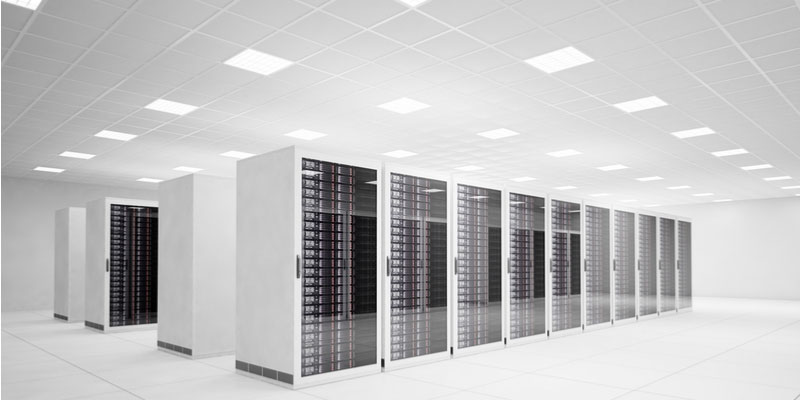From adding portable cooling systems to staying on top of server room temperature control, here are several things you can do to reduce the cost of cooling your data center.
Servers, hard drives and other technical office equipment are commonly stored in a separate data center with unique temperature requirements. It is not uncommon for small and medium-size businesses to require four or more racks to accommodate all necessary computer equipment, in which case an office data room becomes an important addition.
Instead of file folder rooms, like we had in the good old days, today’s offices are home to server rooms where data is electronically stored and processed. All this heat-sensitive equipment produces a great deal of heat. A scenario that almost certainly leads to danger without some type of cooling system.
Maintaining ideal temperatures prevents equipment from overheating, shutting down, sparking a fire, or breaking down completely. Down time and equipment failure is expensive and adds up over time. It’s always cost effective to outfit server rooms and data centers with appropriate cooling systems. Keep in mind, the way you go about cooling a space will impact just how cost effective it is.
Here are three ways you can reduce costs associated with cooling data centers.
1. Ditch Central HVAC Systems for Portable Cooling
In some cases, the central AC system can be used to adequately maintain server room or office data center temperatures. But, in most cases, this results in a lot of wasted air and energy. There are several key reasons data centers are more cost effective when they rely on separate portable cooling equipment, including:
- Office data centers run all day and night, even when the rest of the building shuts down. That means an entire unoccupied building is being cooled for the sake of one room.
- In addition, data centers generally require more cool air to maintain ideal temperatures. This higher heat-load translates to greater cooling power requirements. The only way this works out well with central AC, is if the central system allows you to delegate air separately to the data office. Otherwise, the rest of the office or building may be too cold for comfort when the data center is at the right temperature.
- In the winter, if you turn on the heat, this heat will go into the server room. And it’s never a good idea to heat a server room.
2. Stay on Top of Temperature Control
Overheating often leads to permanent damages or costly repairs. That’s why most data centers are equipped with sensors that detect high heat levels, causing the system to shut down before it overheats. System shut downs may protect equipment from breaking but they still put a wrench in business. They can even cause loss of sensitive or crucial data. Not to mention, network routers that take care of some of the most critical internal and external data transmissions have the highest sensitivity to heat.
Prevent overheating as best as you can by putting additional sensors in place that alert you to high temperatures before they get too high.
3. Reconsider Split-System ACs
If your office data center resides in a leased space, the lease agreement may detail regulations on split precision-cooling or mini-split systems. These methods require cutting into the roof or outer wall in order to run copper connecting pipes through the space. The installation process is extensive, hence why they are written out of many leases.
Self-contained precision-cooling systems don’t need external pipping, but what they save in installation costs, they make up for with a heftier price tag.
Rent Spot Coolers
Cooling Power offers spot coolers for sale and rent! Contact us today to learn more about our cost-effective cooling and power solutions for businesses of all sizes.

